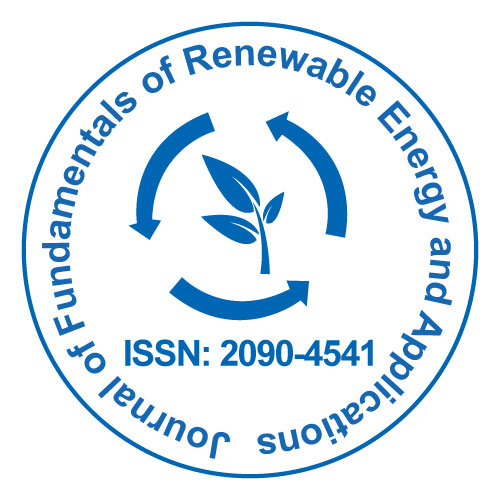
Journal of Fundamentals of Renewable Energy and Applications
Open Access
ISSN: 2090-4541
+44 1300 500008

ISSN: 2090-4541
+44 1300 500008
Commentary - (2023)Volume 13, Issue 3
The moon and sun gravitational pull on Earth's oceans creates tides. Sea levels increase and decrease as a result of this twicedaily cyclic process. Utilizing the use of the kinetic energy generated by these tidal movements is the purpose of tidal energy. As the tide decreases, the water flows out through turbines, producing energy in the process.
Types of tidal energy
There are primarily two types of tidal energy technologies
Tidal stream systems: These systems, often known as marine current turbines, operate similarly to underwater wind turbines. They are installed on the seafloor and capture the kinetic energy of tidal currents. As water runs over the turbines, it causes them to rotate, creating energy. Tidal stream systems are most effective in places with strong and predictable tidal currents.
Tidal range systems: The difference in water level between high and low tides is used in tidal range systems. The tidal range waves is the most common method of implementation, which generally involves constructing of a dam-like structure across a river or tidal region. Water is controlled by gate systems and turbines.
Tidal energy advantages
Renewable and predictable: Tidal energy is a renewable resource that is highly stable. This dependability assures a consistent supply of electricity and makes it a valuable baseload power source.
Low environmental impact: Tidal energy technologies generate less greenhouse gases and produce less noise pollution. In addition, they take up less space than land-based renewable solutions.
Long lifespan: Tidal energy systems have been designed to survive major marine environments and have a longer functioning duration than other types of renewable energy.
Tidal range barrages: These systems are often used for various functions, such as flood control, transportation improvements and for tourism.
Energy independence: Coastal regions that harness tidal energy can reduce their dependence on fossil fuels and increase energy security.
Challenges on the tide path
High initial costs: Tidal energy installation construction can be expensive. Significant investment is required to build the appropriate infrastructure, like as turbines and storage constructions.
Environmental impact: While tidal energy systems have a limited environmental effect while operating, their installation and maintenance may impact local ecosystems. To reduce ecological problems, proper site selection and mitigation techniques are required.
Maintenance challenges: Working in a shipping environment brings maintenance issues, and repairs can be expensive and time-consuming related to the necessity for underwater access.
Synchronization with demand: Tidal energy generation is naturally related to tidal patterns, which may or may not coincide with electricity demand. To overcome this difficulty, advanced energy storage systems or grid integration methods are required.
Importance of tidal energy in the renewable energy mix
Tidal energy complements other renewable sources, such as wind and solar power, by providing a consistent and reliable energy supply. While wind and solar energy is reduced to fluctuations due to weather conditions, tidal energy maintains its steady pace in line with tidal patterns. This stability makes it an attractive option for filling the gaps in electricity generation. Furthermore, tidal energy can contribute to a diversified energy mix by improving energy security and reducing dependence on fossil fuels.
Innovation and future prospects
The future of tidal energy is bright, as continual advancements and more investment move the sector forward. Innovative technologies, such as underwater kites and more efficient turbine designs, are being investigated to increase energy capture and reduce the costs. To achieve the full potential of tidal energy, governments, private business and research institutes must work together. This involves continuing research and development, improved cooperation and supporting regulatory frameworks to help tidal energy projects.
Citation: Hovel S (2023) Developing a Sustainable Future with Tidal Energy. J Fundam Renewable Energy Appl. 13:318
Received: 02-Aug-2023, Manuscript No. JFRA-23-27521; Editor assigned: 07-Aug-2023, Pre QC No. JFRA-23-27521 (PQ); Reviewed: 21-Aug-2023, QC No. JFRA-23-27521; Revised: 28-Aug-2023, Manuscript No. JFRA-23-27521 (R); Published: 04-Sep-2023 , DOI: 10.35248/2090-4541.23.13.318
Copyright: © 2023 Hovel S. This is an open-access article distributed under the terms of the Creative Commons Attribution License, which permits unrestricted use, distribution, and reproduction in any medium, provided the original author and source are credited